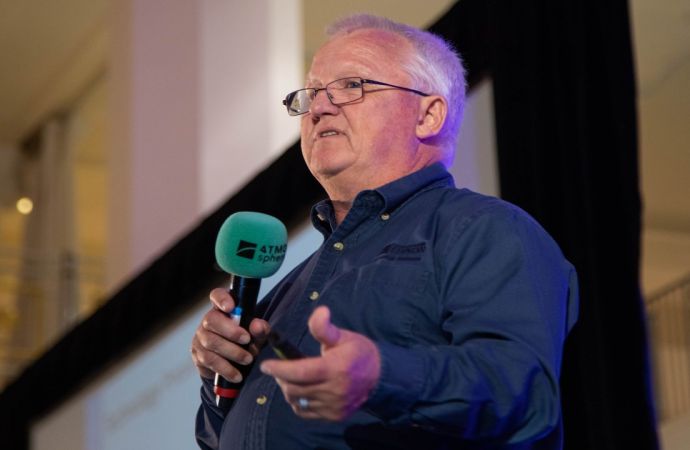Ammonia and other natural refrigerants are viable alternatives to ozone-depleting HCFCs in developing countries, a report with contributions from experts around the world suggests. The extensive work will be presented at a high-level meeting in Bangkok next month.

Case studies on natural refrigerants, including ammonia, are the focus of a new report from the Gesellschaft für Technische Zusammenarbeit (GTZ) to help developing countries accelerate the phase-out of ozone-depleting substances in refrigeration. The publication provides a comprehensive overview of already available ozone- and climate friendly options and their application range in industrial and commercial refrigeration. Following a thorough analysis of major global policy frameworks ruling the phase-out of HCFCs, the publications gives advice on where and how to use natural fluids, such as ammonia, hydrocarbons, or carbon dioxide. Aimed at decision makers in government and the private sector, it provides a summary of market trends and case studies, thereby demonstrating how an early switch from fluorinated gases to natural refrigerants can be safe and economically viable.
Project Motivation & Objectives
The new report is a collection of expert contributions from all around the world. It was launched under the PROKLIMA project, which has provided technical and financial support for developing countries subject to the Montreal and Kyoto Protocol since 1996. With more than 30 articles from government, industry and academia, the final report summarizes the most important aspects of concern to developing countries. Two criteria that could drive the use of natural refrigerants were analysed:
A significant number of articles on applications working with natural fluids are dedicated to ammonia. Already in its introduction to policy initiatives worldwide, the PROKLIMA publication highlights Luxembourg’s initiative to ban HFCs in many applications and use ammonia in all types of equipment with a capacity larger than 150 kW. Moreover, NH3 is already used as a refrigerant in all fields of industrial refrigeration and makes up about 15% of the total refrigerant market. The natural fluid has been identified as the most cost competitive and also efficient option for all types of industrial equipment. A major setback for a wider spread of ammonia would be the reluctance by users to comply with strict regulatory requirements. In the future, more applications of ammonia are expected in chillers and in commercial refrigeration.
Furthermore, the contributions and case studies focusing on the natural refrigerant NH3 include:
The Deutsche Gesellschaft für Technische Zusammenarbeit (GTZ) is a government-owned corporation for international cooperation with worldwide operations. GTZ’s aim is to shape the political, economic, ecological and social development worldwide through the support of complex development and reform processes, as well as sustainable development. The German Federal Ministry for Economic Cooperation and Development (BMZ) is its main financing organisation. Its partner organizations include the European Commission, the United Nations and the World Bank. The organisation has more than 10,000 employees in around 130 countries.
PROKLIMA is one of five GTZ programmes helping partner countries to fulfill the requirements of international conventions. With more than 110 projects and a financial volume of over €24 million, PROKLIMA is the most important bilateral partner of the Montreal Protocol’s Multilateral Fund.
Project Motivation & Objectives
The new report is a collection of expert contributions from all around the world. It was launched under the PROKLIMA project, which has provided technical and financial support for developing countries subject to the Montreal and Kyoto Protocol since 1996. With more than 30 articles from government, industry and academia, the final report summarizes the most important aspects of concern to developing countries. Two criteria that could drive the use of natural refrigerants were analysed:
- Economic benefits: As natural refrigerants are seen by many as the only viable long-term replacement for both ozone-depleting and high global warming gases, their early use could avoid lengthy transition periods and leapfrog HFCs in developing countries. Moreover, the GTZ report estimates that emerging economies can minimize foreign currency expenditures on chemical imports, eliminate supply dependencies associated with these imports, and instead concentrate resources on a long-term use of natural refrigerants. This, in turn, would strengthen the national capacity to produce domestic installations and secure jobs.
- Environmental benefits: Helping countries to improve their carbon footprint by reducing energy consumption and greenhouse gas emissions from chemical refrigerants’ production, is the second rationale for the use of natural refrigerants. The report thus gives advice on how developing countries can concentrate their R&D efforts on energy efficiency potentials offered by ammonia and other natural gases.
A significant number of articles on applications working with natural fluids are dedicated to ammonia. Already in its introduction to policy initiatives worldwide, the PROKLIMA publication highlights Luxembourg’s initiative to ban HFCs in many applications and use ammonia in all types of equipment with a capacity larger than 150 kW. Moreover, NH3 is already used as a refrigerant in all fields of industrial refrigeration and makes up about 15% of the total refrigerant market. The natural fluid has been identified as the most cost competitive and also efficient option for all types of industrial equipment. A major setback for a wider spread of ammonia would be the reluctance by users to comply with strict regulatory requirements. In the future, more applications of ammonia are expected in chillers and in commercial refrigeration.
Furthermore, the contributions and case studies focusing on the natural refrigerant NH3 include:
- Ammonia and its reputation as refrigerant (Anders Lindborg, Ammonia Partnership AB, Sweden)
- Application of ammonia heat pump systems for heating and cooling in non-residential buildings (Jørn Stene, SINTEF Energy Research, Norway)
- Natural refrigerants in dairy processing, supermarket refrigeration and air conditioning (Karin Jahn, Eurammon, Germany)
- Water chillers with ammonia for building services (Andy Pearson, Star Refrigeration Ltd., UK)
- Opportunities for the application of natural refrigerants (Daniel Colbourne, Re-phridge, UK)
- Trends and perspectives in supermarket refrigeration (Michael Kauffeld, Karlsruhe University of Applied Sciences, Institute of Refrigeration, Air Conditioning and Environmental Engineering, Germany)
The Deutsche Gesellschaft für Technische Zusammenarbeit (GTZ) is a government-owned corporation for international cooperation with worldwide operations. GTZ’s aim is to shape the political, economic, ecological and social development worldwide through the support of complex development and reform processes, as well as sustainable development. The German Federal Ministry for Economic Cooperation and Development (BMZ) is its main financing organisation. Its partner organizations include the European Commission, the United Nations and the World Bank. The organisation has more than 10,000 employees in around 130 countries.
PROKLIMA is one of five GTZ programmes helping partner countries to fulfill the requirements of international conventions. With more than 110 projects and a financial volume of over €24 million, PROKLIMA is the most important bilateral partner of the Montreal Protocol’s Multilateral Fund.
MORE INFORMATION
Related stories




